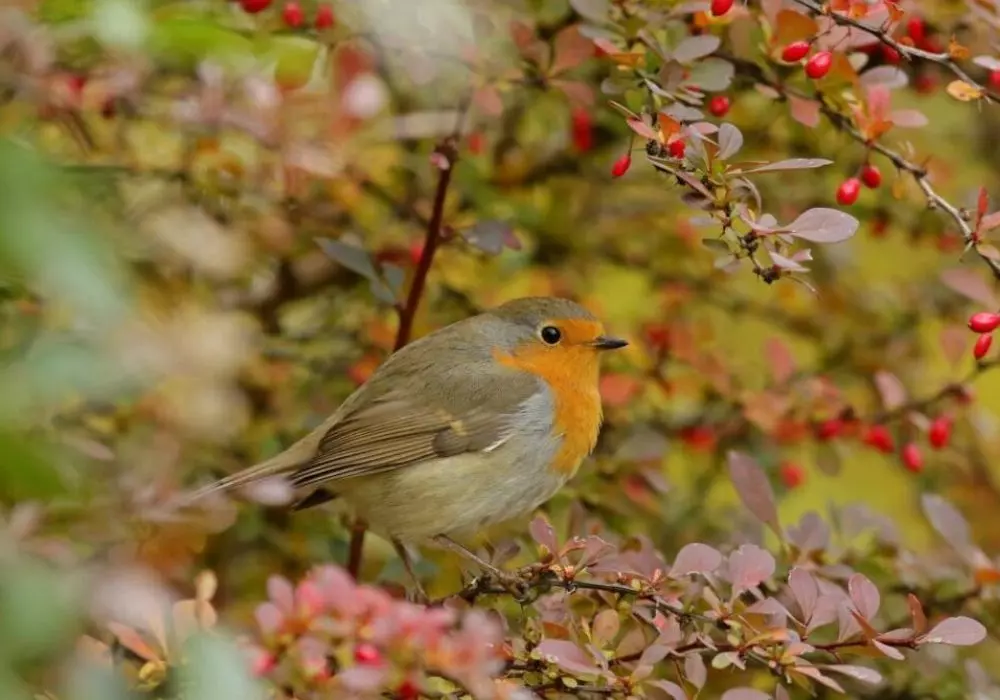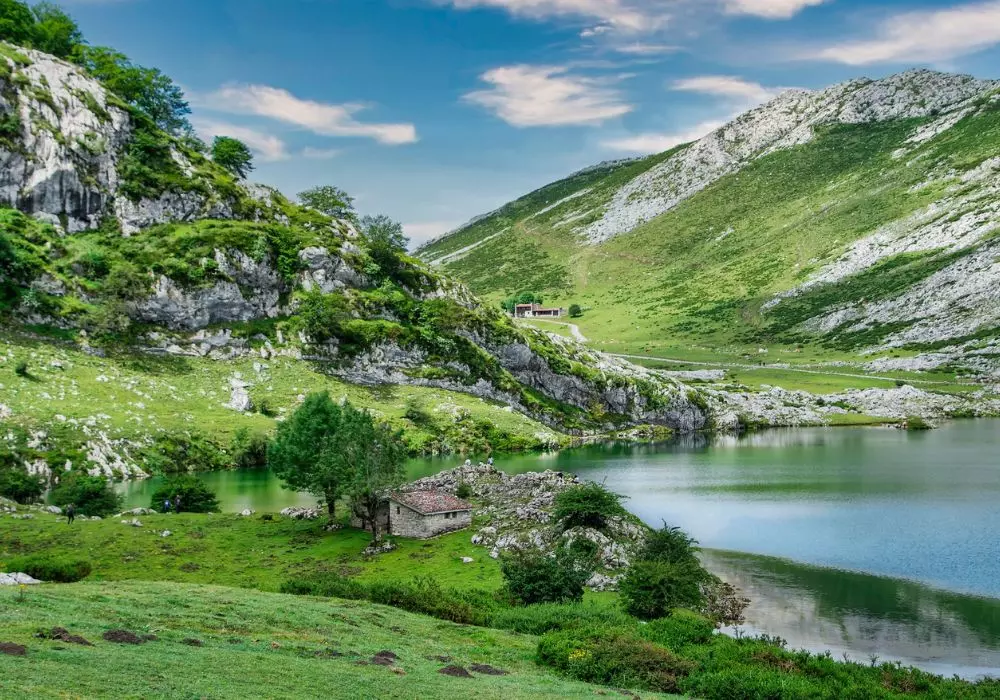Attracting birds to your garden while traveling can seem challenging, but with the right strategies, you can create a bird-friendly environment that thrives even in your absence.
By carefully selecting plants, setting up feeders, and providing essential water sources, you can ensure that your garden remains a welcoming haven for birds year-round.
This guide will show you how to attract birds to your garden while traveling, so you can enjoy a lively and vibrant outdoor space, no matter where your travels take you.
Quick Reference Guide: How to Attract Birds to Your Garden While Traveling
Certainly! Here’s a table summarizing key points from the article “How to Attract Birds to Your Garden While Traveling”:
| Section | Tips & Strategies | Benefits |
|---|---|---|
| Plan Your Garden for Bird Attraction | – Plant native species – Include berry, seed, and nectar-producing plants – Provide water sources | – Attracts local bird species naturally – Offers food and water year-round |
| Set Up Feeders for Long-Term Use | – Use large-capacity feeders – Stock up on bird food – Consider automatic feeders | – Ensures continuous food supply while away – Reduces need for frequent refilling |
| Arrange for Garden Maintenance | – Ask a neighbor or friend to help – Hire a professional garden service | – Maintains garden condition – Keeps feeders and water sources functional |
| Prevent Common Problems | – Use squirrel-proof feeders – Place feeders near cover – Protect against predators | – Minimizes food loss to pests – Protects birds from predators |
| Enjoy Birdwatching Remotely | – Install wildlife cameras – Use birdwatching apps | – Stay connected to your garden – Monitor bird activity from anywhere |
| Returning Home | – Refill and clean feeders – Check water sources – Inspect and maintain nest boxes | – Restores garden to optimal condition – Prepares garden for continued bird attraction |
This table provides a quick overview of the article’s key sections, tips, and the benefits of implementing each strategy.
1. Plan Your Garden for Bird Attraction
Before you leave for your trip, it’s important to have a garden that naturally attracts birds. By planting a variety of bird-friendly plants and ensuring that your garden provides essential resources like food, water, and shelter, you can create an environment that will continue to draw birds even in your absence.
a. Choose Native Plants
Native plants are the cornerstone of any bird-friendly garden. They provide natural food sources such as seeds, berries, and nectar that birds rely on throughout the year. Native plants are also more likely to attract local insects, which many bird species feed on.
Berries and Seeds: Plants like dogwood, elderberry, and sunflower are excellent choices because they produce berries or seeds that birds love. Consider adding a mix of plants that offer food at different times of the year to ensure a steady supply.
Nectar Plants: For hummingbirds and other nectar-feeding birds, include flowering plants such as honeysuckle, trumpet vine, and bee balm. These plants will provide the energy-rich nectar that these birds need.
Insect-Attracting Plants: Some birds rely heavily on insects for food, especially during the breeding season. Native plants like oak trees, goldenrod, and aster attract a variety of insects that birds can feast on.
b. Provide Water Sources
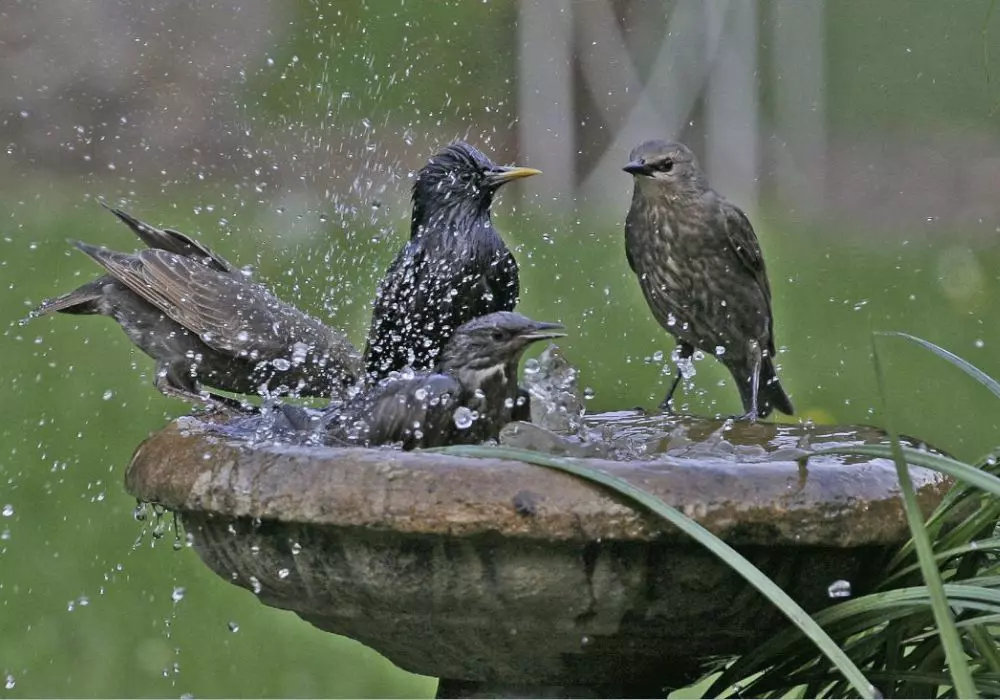

Water is just as important as food for birds, and having a reliable water source in your garden is crucial, especially during dry periods.
Bird Baths: A simple bird bath can be a great attraction. Place it in a quiet, sheltered area of your garden, preferably near some shrubs or trees where birds can perch and preen after bathing.
Moving Water: Birds are particularly attracted to the sound of moving water. If possible, install a small fountain, dripper, or bubbler in your bird bath. The sound will catch the attention of passing birds and encourage them to stop by.
Maintaining Water Sources: Before you leave, ensure your water features are clean and functioning properly. If you’re going to be away for an extended period, consider installing an automatic waterer to keep the bird bath filled.
c. Create Shelter and Nesting Sites
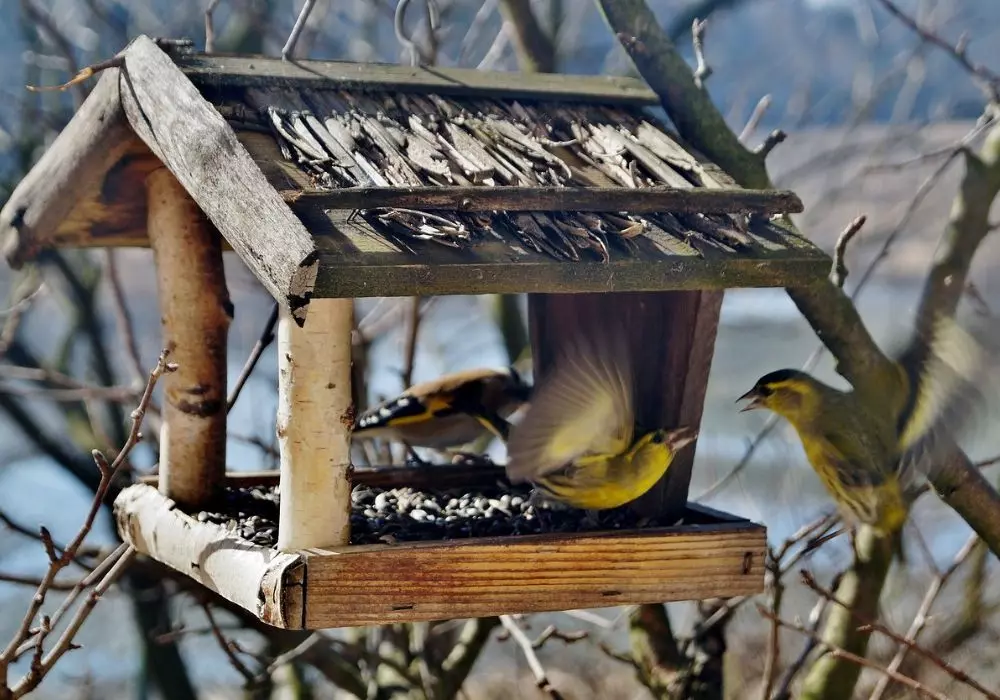

Birds need shelter for protection from predators and harsh weather, as well as safe places to nest.
Dense Shrubs and Trees: Planting dense shrubs and trees provides birds with cover and nesting sites. Species like hawthorn, holly, and conifers are excellent for providing year-round protection.
Nest Boxes: Install nest boxes for cavity-nesting birds such as bluebirds, chickadees, and wrens. Make sure these boxes are placed in appropriate locations, away from potential predators and facing away from prevailing winds.
Brush Piles: If you have space, consider creating a brush pile in a corner of your garden. This not only provides shelter for birds but also attracts insects that birds can feed on.
2. Set Up Feeders for Long-Term Use
Feeders are a popular way to attract birds to your garden, but when you’re traveling, it’s important to ensure they continue to function effectively.
a. Choose the Right Feeders
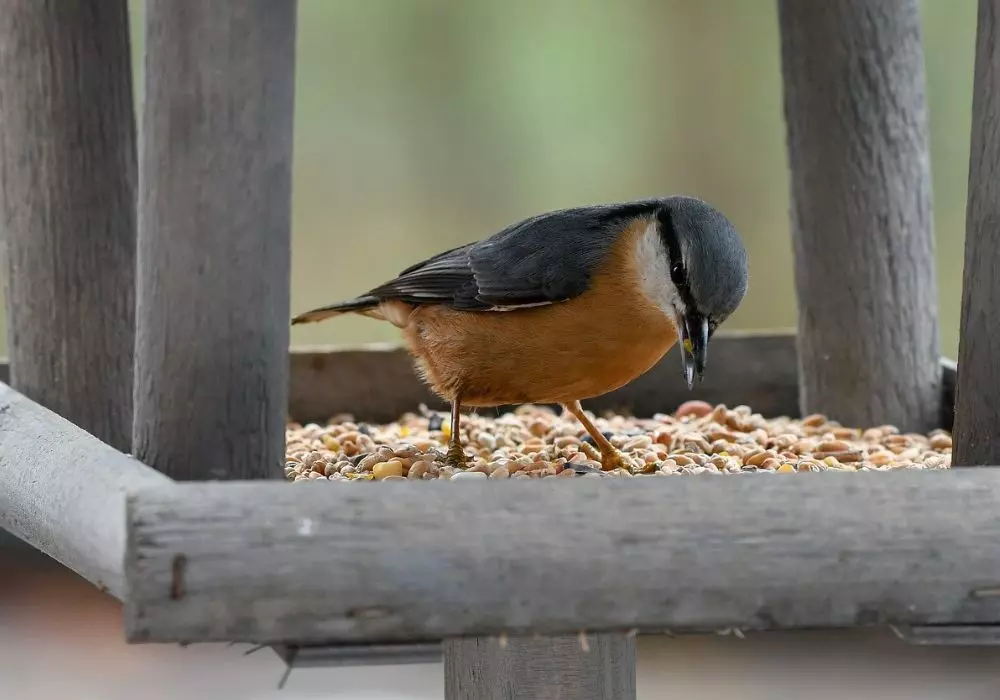

Different feeders attract different types of birds, so having a variety of feeders will bring a greater diversity of species to your garden.
Seed Feeders: Tube feeders are great for attracting small songbirds like finches and chickadees. Platform feeders can accommodate larger birds such as cardinals and doves.
Nectar Feeders: For hummingbirds, a nectar feeder filled with a simple sugar-water solution will do the trick. Be sure to use a feeder that is easy to clean and has a large enough reservoir to last while you’re away.
Suet Feeders: Suet feeders are ideal for woodpeckers, nuthatches, and other insect-eating birds. These feeders should be placed in shaded areas to prevent the suet from melting.
b. Stock Up on Bird Food
Before you leave, stock your feeders with plenty of bird food. Here are some tips to ensure your feeders remain filled:
Use Larger Capacity Feeders: Invest in larger feeders that can hold more food, reducing the frequency with which they need to be refilled.
Fill Feeders Just Before You Leave: Make sure all your feeders are topped off with fresh food just before you depart.
Choose the Right Food: High-energy foods like black oil sunflower seeds, peanuts, and suet cakes are popular with many species and will provide birds with the nutrients they need.
c. Consider Automatic Feeders
If you’re going to be away for an extended period, consider investing in automatic feeders. These feeders are designed to dispense food at set intervals, ensuring a steady supply of food even when you’re not there to refill them.
Programmable Feeders: Some automatic feeders can be programmed to release a specific amount of food at certain times of the day. This not only keeps the birds fed but also helps prevent wastage.
Battery-Powered Feeders: Look for battery-powered or solar-powered feeders that don’t require constant attention. These feeders are particularly useful if you’ll be away for a long time.
3. Arrange for Garden Maintenance
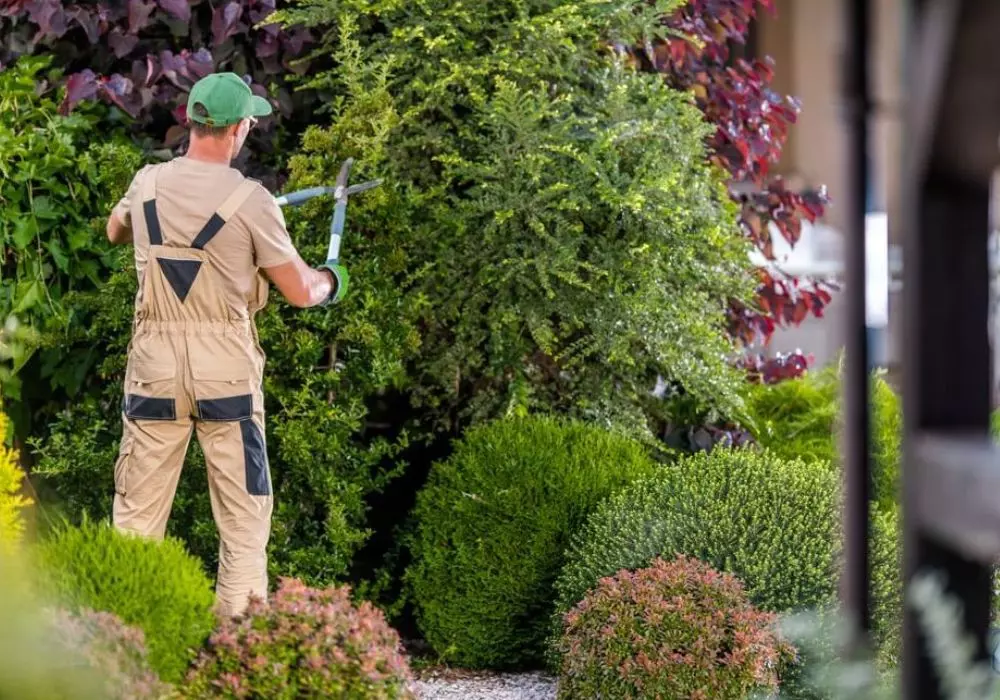

Even with the best preparations, it’s important to arrange for someone to check on your garden periodically while you’re away.
a. Ask a Neighbor or Friend
If you have a trusted neighbor or friend who is willing to help, ask them to check on your garden every few days.
Refill Feeders: Request that they refill the bird feeders as needed. You can make the job easier by pre-filling containers with birdseed, so they only need to pour it into the feeders.
Clean Water Sources: Have them check the bird bath to ensure it’s clean and has plenty of water. If you’ve set up a fountain or dripper, they can also make sure it’s still functioning properly.
Monitor Nest Boxes: If you have nest boxes, ask them to observe from a distance and ensure that everything is in order without disturbing the birds.
b. Hire a Professional Garden Service
If you don’t have anyone available to help, consider hiring a professional garden service.
Many landscaping companies offer services like watering plants, checking feeders, and maintaining water features while you’re away.
Custom Instructions: Provide specific instructions on how to care for the bird-related aspects of your garden. This might include watering plants, refilling feeders, or ensuring the cleanliness of water features.
Regular Check-Ins: Arrange for regular visits, depending on how long you’ll be away. This ensures that your garden remains in top condition and continues to attract birds.
4. Prevent Common Problems While You’re Away
While you’re traveling, it’s important to consider potential issues that could arise in your absence and take steps to prevent them.
a. Keep Pests at Bay
Pests like squirrels, raccoons, and even larger birds can sometimes raid bird feeders, leaving little for the birds you want to attract.
Use Squirrel-Proof Feeders
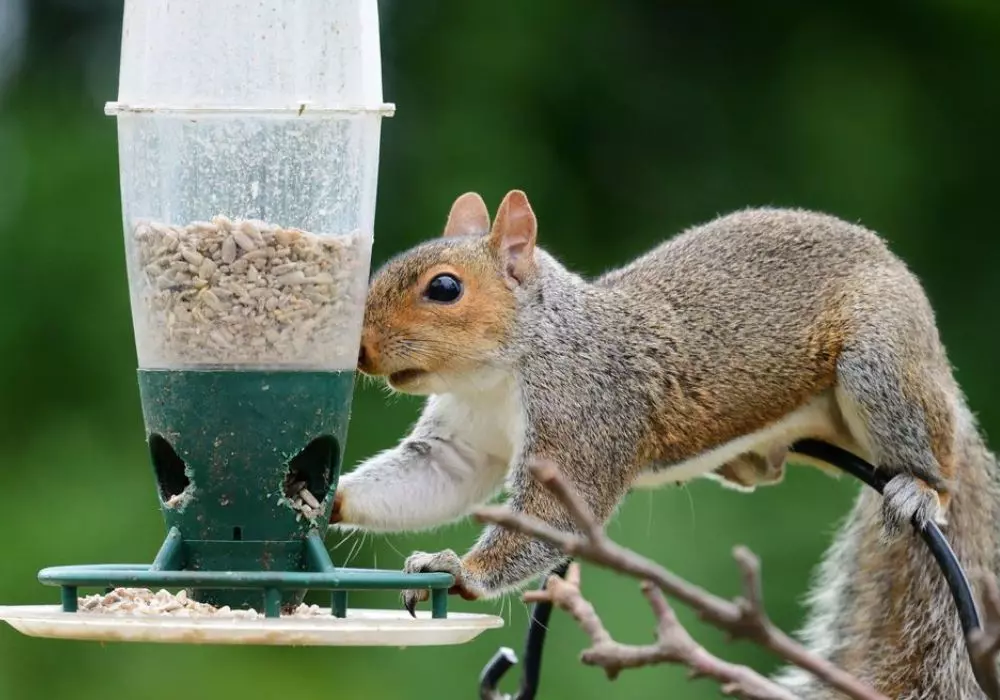

Invest in feeders that are specifically designed to deter squirrels and other pests. These often have mechanisms that close off access to the food when a heavier animal tries to feed.
Place Feeders Wisely: Hang feeders in locations that are difficult for pests to reach. For example, place them away from trees or fences that squirrels could use to jump onto the feeder.
Consider Baffles: Baffles are barriers that can be placed above or below feeders to prevent animals from climbing or jumping onto them.
b. Protect Against Predators
Cats, hawks, and other predators can pose a threat to birds in your garden. While it’s difficult to completely eliminate this risk, there are steps you can take to minimize it.
Place Feeders Near Cover
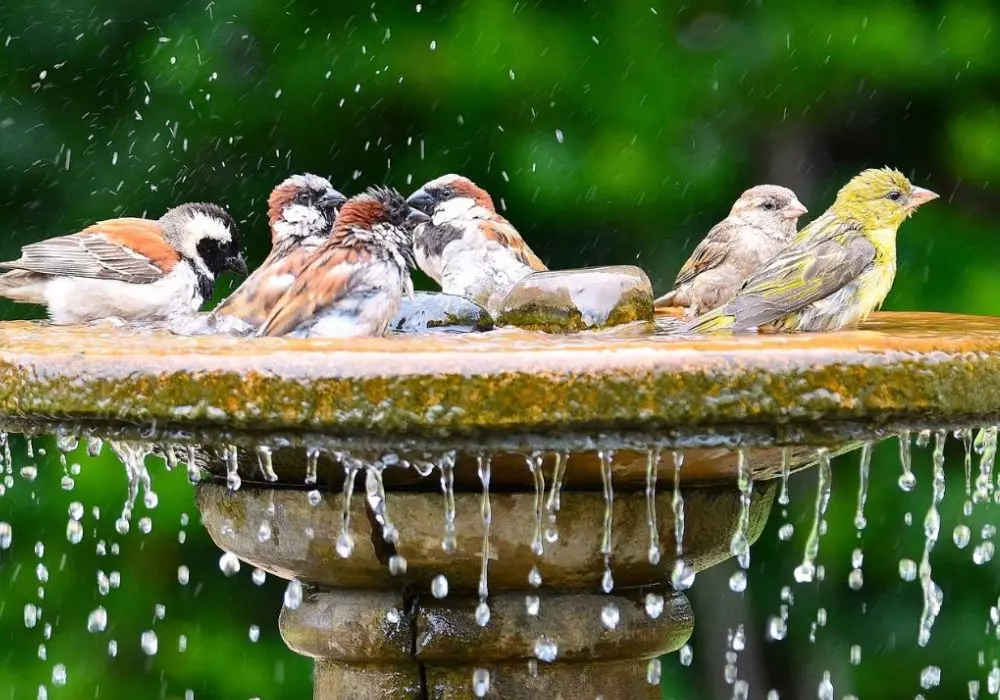

Position bird feeders and baths near shrubs or other cover where birds can quickly retreat if they sense danger.
Use Bird Netting: In some cases, bird netting can be used to create a protective barrier around feeders or nesting areas, making it harder for predators to access them.
Discourage Cats: If neighborhood cats frequent your garden, consider using cat deterrents such as motion-activated sprinklers or ultrasonic devices.
c. Ensure Consistent Care
To keep your garden in good condition while you’re away, it’s essential to plan for consistent care.
Set Timers for Lights and Water Features: If your garden includes lighting or water features, use timers to ensure they operate consistently.
This can help maintain a routine that birds become accustomed to.
Automate Sprinklers: If you have a sprinkler system, set it to water your garden at regular intervals. This ensures that plants stay healthy and continue to attract insects, which in turn attract birds.
5. Enjoy Birdwatching Remotely
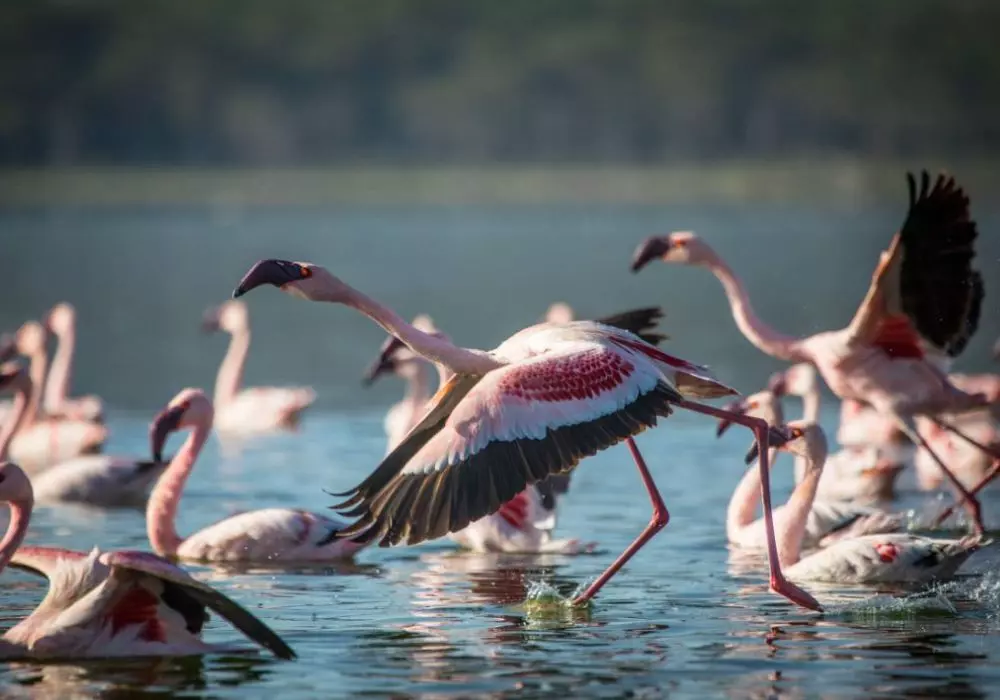

Even while traveling, you can still enjoy the sight and sounds of your garden visitors.
a. Install Wildlife Cameras
Consider installing wildlife cameras or bird cams in your garden. These cameras can capture footage of the birds that visit your garden, allowing you to keep an eye on them even when you’re miles away.
Live Streaming: Some cameras offer live streaming capabilities, so you can watch the birds in real-time from your smartphone, tablet, or computer. This is a great way to stay connected with your garden and enjoy birdwatching even while traveling.
Motion Detection: Many wildlife cameras are equipped with motion detection, so they start recording as soon as a bird enters the frame. You can review the footage later to see what species visited your garden.
Night Vision: If you’re interested in observing nocturnal birds or other wildlife that visit your garden at night, choose a camera with night vision capabilities.
b. Use Birdwatching Apps
There are several birdwatching apps available that allow you to log and track bird sightings. Some apps even connect to bird cams, enabling you to record observations remotely.
eBird: eBird is a popular app that allows you to record bird sightings and contribute to a global database of bird observations. You can use the app to keep track of the birds visiting your garden, even when you’re away.
Merlin Bird ID
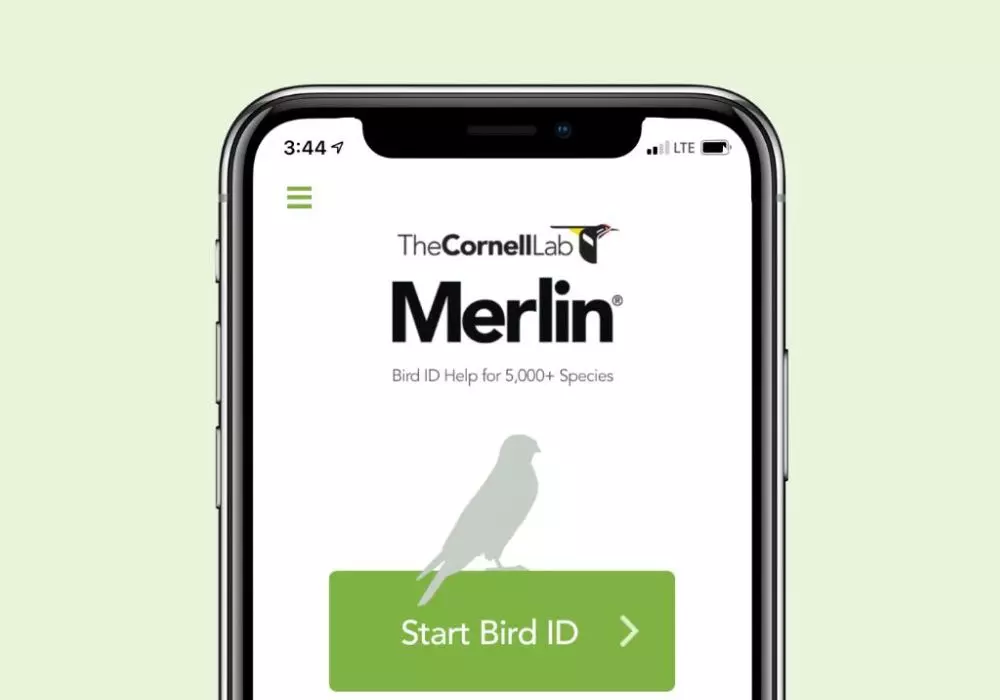

This app helps with identifying birds based on photos, bird calls, and songs. If your wildlife camera captures a new or unfamiliar bird, you can use Merlin Bird ID to help identify it.
BirdNET: BirdNET is an app that analyzes bird sounds and helps identify the species based on their calls. You can use this app to listen to the recordings from your garden and identify any birds you may not recognize.
6. Returning Home: Reassessing and Replenishing
When you return home from your travels, it’s time to reassess the state of your garden and make any necessary adjustments to continue attracting birds.
a. Refill and Clean Feeders
After being away, your first priority should be to refill any feeders that may have run low on food. It’s also a good idea to clean the feeders thoroughly to prevent the spread of disease.
Deep Cleaning: Take the time to disassemble your feeders and clean them with warm, soapy water. Rinse thoroughly and allow them to dry completely before refilling.
Fresh Food: Refill feeders with fresh birdseed, suet, or nectar. If you notice that any food has gone stale or moldy, discard it and replace it with fresh supplies.
b. Check Water Sources
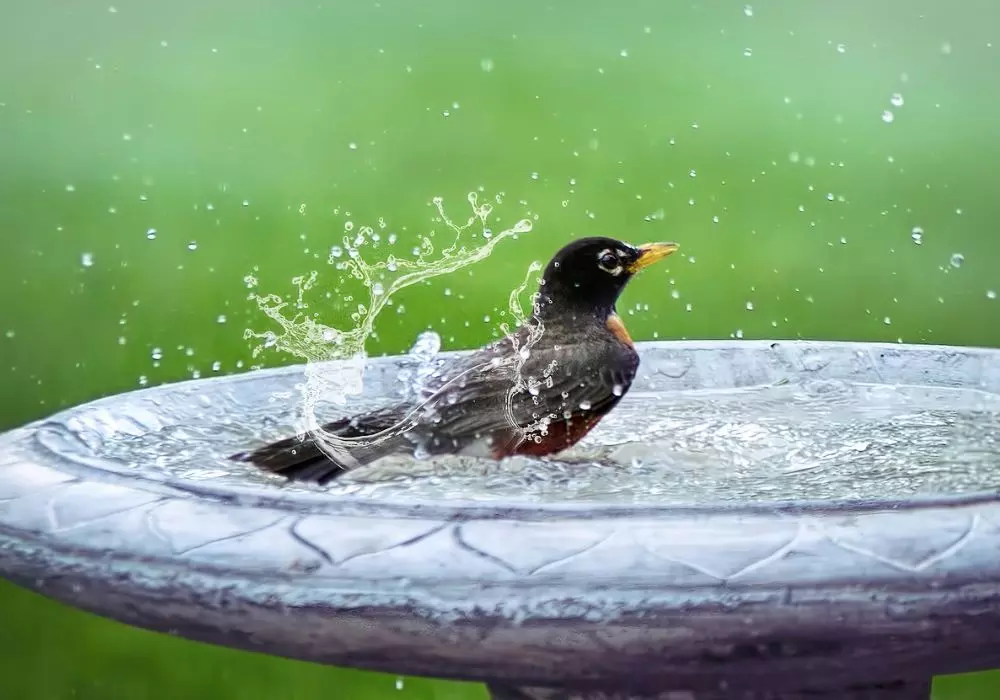

Ensure that your bird baths and other water features are clean and filled with fresh water. If you’ve been away for a while, algae or debris may have accumulated, so it’s important to clean these thoroughly.
Remove Debris: Empty the bird bath, scrub it with a brush to remove algae and dirt, and refill it with clean water.
Check for Leaks: Inspect any fountains or automatic waterers for leaks or damage, especially if they were in use while you were away. Repair or replace any equipment as needed.
c. Inspect and Maintain Nest Boxes
If you have nest boxes in your garden, check to see if they were used during your absence. Look for signs of nesting activity, such as nesting materials or droppings.
Clean Out Old Nests
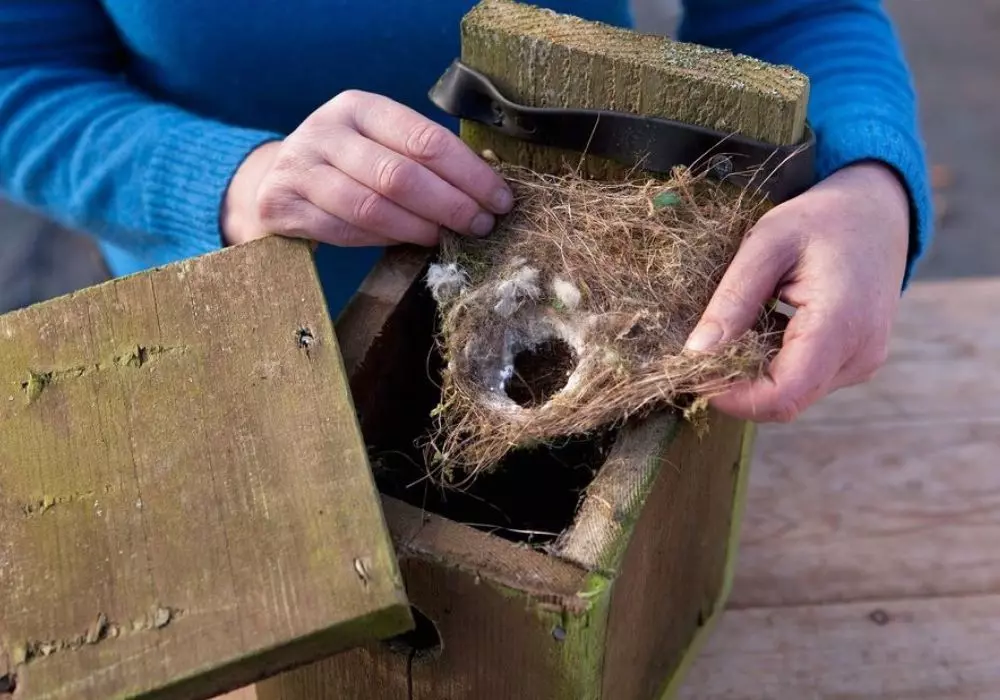

Once the breeding season is over, it’s a good practice to clean out old nests to prepare the boxes for the next season. This reduces the risk of parasites and diseases.
Inspect for Damage: Check the nest boxes for any signs of wear or damage, such as loose screws or broken wood. Repair or replace any damaged parts to ensure the boxes remain safe and secure for future use.
d. Evaluate Plant Health
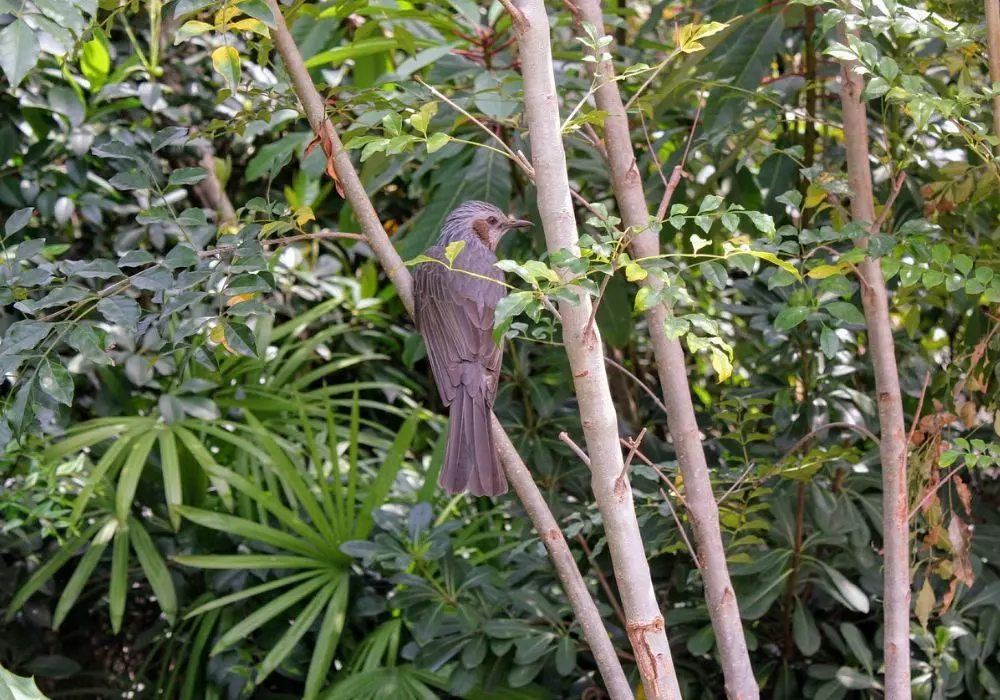

Check the condition of your plants and garden as a whole. Depending on the weather and the care it received while you were away, you may need to do some maintenance.
Watering: If your plants look dry or wilted, give them a deep watering. Make sure to water thoroughly to reach the roots, especially for plants that provide food or shelter for birds.
Pruning: Trim any overgrown or damaged plants to encourage healthy growth. This is particularly important for plants that produce berries or seeds, as pruning can enhance their yield.
Mulching: Add mulch around plants to retain moisture and reduce the need for frequent watering. Mulching also helps suppress weeds, which can compete with your bird-friendly plants for nutrients.
Conclusion
Attracting birds to your garden while you’re traveling is not only possible but also a rewarding way to maintain a connection with nature even when you’re away. By carefully planning your garden with native plants, providing essential resources like food, water, and shelter, and taking steps to ensure your garden is well-maintained, you can create a year-round haven for birds. Whether you’re on the road or at home, the joy of knowing that your garden is bustling with avian activity brings a sense of fulfillment and continuity to your birdwatching hobby.
As you travel, consider using technology like wildlife cameras and birdwatching apps to stay engaged with your garden’s visitors. And when you return, take the time to reassess and replenish your garden to keep it thriving and welcoming for the birds you love. With these strategies in place, your garden will remain a vibrant and inviting sanctuary for birds, no matter where your travels take you.
Happy birdwatching!
